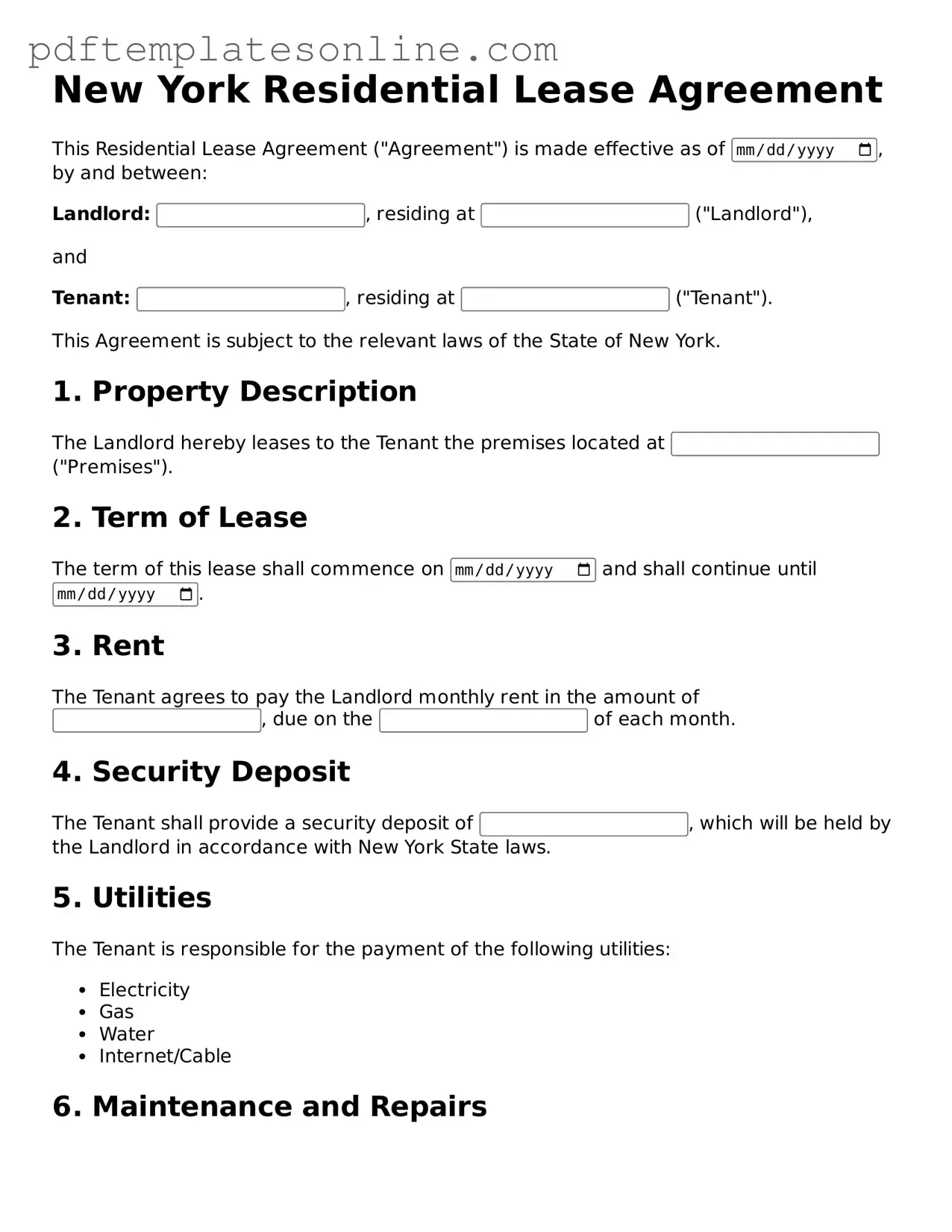Filling out the New York Residential Lease Agreement form can be a straightforward process, but many people make critical mistakes that can lead to confusion or disputes later on. One common error is failing to provide accurate information about the rental property. It’s essential to double-check the address and any specific unit numbers. Inaccurate details can complicate the lease and create issues for both landlords and tenants.
Another frequent mistake is neglecting to specify the lease term. Whether it’s a month-to-month agreement or a fixed-term lease, clarity is key. Without this information, both parties may have different expectations about the duration of the tenancy, leading to potential conflicts.
People often overlook the importance of including all necessary signatures. A lease agreement is not legally binding until all required parties have signed it. This includes not only the landlord but also all tenants listed on the lease. Missing a signature can render the agreement invalid.
Additionally, many individuals fail to read the entire lease carefully before signing. Skimming through the document can lead to misunderstandings about responsibilities, such as maintenance obligations or rules regarding pets. Taking the time to understand every clause is crucial for a smooth rental experience.
Lastly, some tenants mistakenly assume that verbal agreements are sufficient. Any modifications or agreements made after the lease is signed should be documented in writing. Relying on verbal promises can lead to disputes, as they are often difficult to prove. Always ensure that any changes are clearly stated in the lease to avoid complications down the line.
